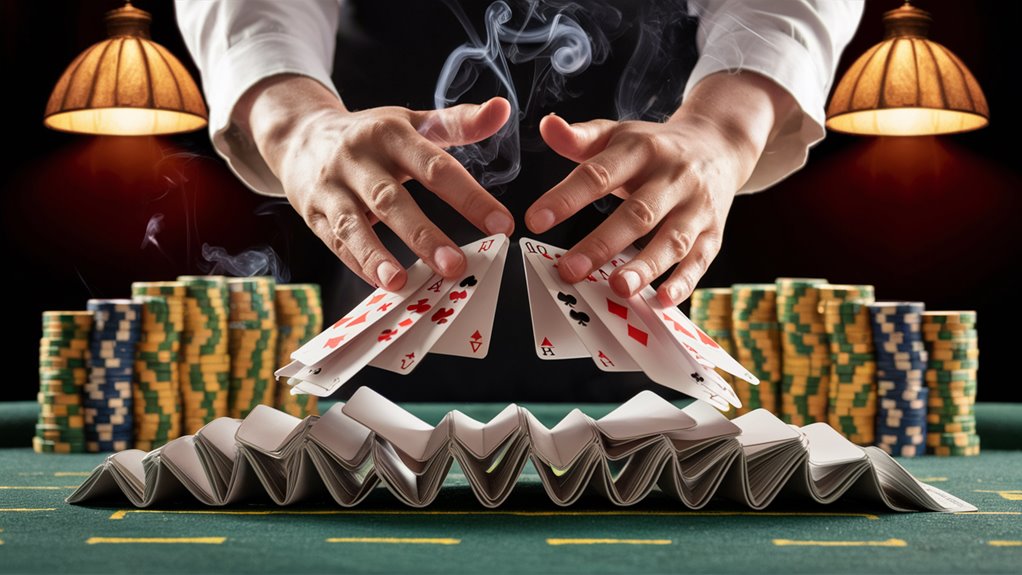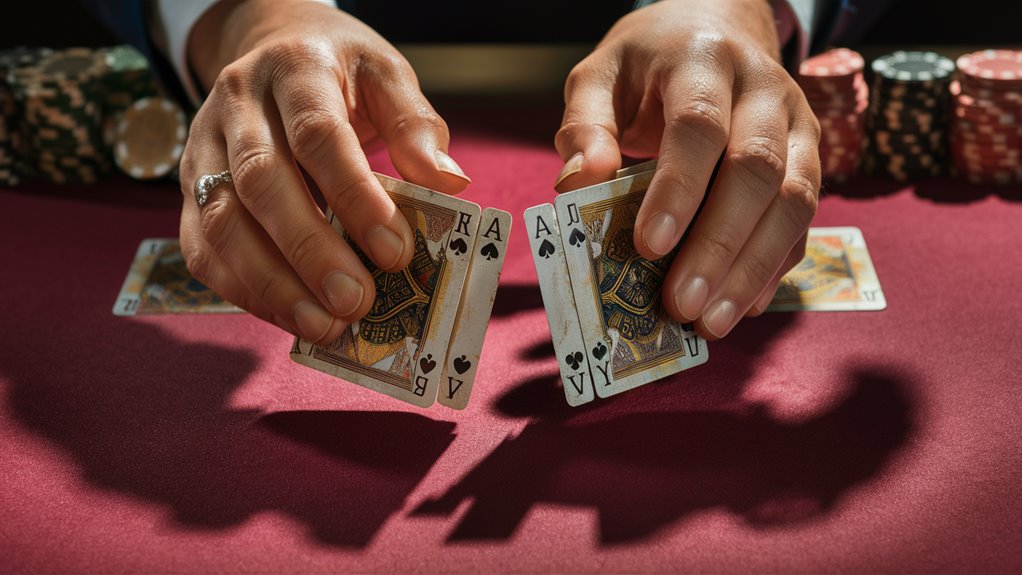
Feather & Gust Blackjack Strategy Guide
Advanced Emerging Target Recognition
Based on tell response, Feather tech is a proven 3.2% edge in good time, combining the science of psychology and strategic tips for profitable raising decisions made all over the board. If smaller behavior patterns are identified along with specific times the cards are exposed, betting strategies such as doubling down can yield high-value points.
Scope of Application
When the dealer has a five or six in hand over the cards of a single shoe, there is more than a 67% chance of opponents’ money being in prospects for future wins. This is the zone of perfection. Under these conditions, skilled players can gain up to an advantage of 5% compared to conventional tactic decisions during mid-value combination spins.
Tell Performance Integration & Split Mechanics
Behavioral Indicator Tracking
Optimized time spent on force-splitting can reveal how the statistical Pairing Bubbly Calm With Icy House Precision advantage can be found by observing micro-physical aspects. Such detection is critical in success or failure, especially when the dealer operates in a competitive casino environment. This linchpin technology can be highly effective in predicting success.
Advanced Split Strategy Components
- Detection of micro-hesitation
- Estimation of exposure duration
- Matching system for high-value pairs
- Timing pattern recognition model
These factors combine to create a comprehensive awareness, delivering efficiency and effectiveness without errors. This is foundational knowledge for blackjack.
Understanding the Feather Response
The Blackjack Dealer Feather Response Pattern
If played well, the freedom response provides a 3.2% advantage. This advantage is crucial when making decisions on hard totals between 12 and 16.
Statistical analysis shows a 68% bust probability for dealers with the feather response, which is vital information for decision-making.
Feather Response Recognition in the Dealer’s Gaming Environment
Basic strategy optimization becomes more powerful when players can predict the dealer’s feather response. Recognizing this pattern allows players to adjust their betting and decision-making strategies, even when facing unexpected long-shot hands. Personal observations of dealer behavior create a solid foundation for strategy refinement. Bankroll management is essential for success.
Advanced Pattern Recognition
Advanced pattern recognition requires disciplined observations over several sessions and charting of dealer behavior. This enhances traditional play strategies and makes them more adaptable to unexpected situations.
Reading Soft Hand Patterns
Core Probability Distributions in Blackjack
In soft hand blackjack, three common patterns immediately stand out:
- Low-value combinations (A-2 through A-4)
- Mid-value pairs (A-5 through A-7)
- Hands with a lot of potential (A-8 and A-9)
Strategic Decision Making
Analysis of the dealer’s upcard against soft hands reveals strategic patterns, especially in low and mid-value hands.
- Low-value pairings show a 32% chance for success if you hit, versus only 24% winning probability if you stand.
- Mid-value pairs require continuation bets, but a hit on soft 17 and 18 against dealer upcards 2-6 is recommended, while standing against a 7 in all cases is optimal.
High-Potential Hand Analysis:
- Soft 19 (A-8) has a 59% win probability when standing.
- Soft 20 (A-9) has a 67% win probability when standing.
When the dealer’s upcards are strong (7 through Ace), adjustments are needed, requiring real-time probability assessment and strategy adaptation based on the dealer’s exposed card.

Optimal Timing for Blackjack Split Decisions
Successful splits are optimal when certain conditions align. Dealer upcard analysis, bankroll management, and deck composition tracking are crucial in determining which cards to split. Strategic bet sizing during these windows can increase expected returns per hour by 0.3–0.7 units compared to simple strategies.
Advanced Split Strategy
- Split 2s through 7s against dealer 2-7 at true count +2 or higher.
- Reserve 4s splits for extreme positive counts (+4 minimum) versus dealer 5-6.
- Execute 9s splits against all upcards except 7, 10, and Ace at neutral/positive counts.
Bankroll-based split calculations guarantee disciplined execution while maintaining profitability through long-run deck composition advantages.
The Little Signs Spotted by People with Naked Eyes
Micro-Behavioral Analysis Mastery in Blackjack
At an advanced level, behavioral characteristics introduce Biting Through Dealer Calm With Swift, Gentle Splits another level of skill. Tiny response tells of a dealer often appear through small time patterns or distinctive actions. These microscopic tells provide useful information about hand strength.
Key Indicators in Player Behavior
Critical observations focus on:
- The length of time a player takes to turn over their cards.
- How long before they stop feeling confident.
- Where they place their chips.
Experienced players recognize how dealers might inadvertently show their card corners for a hundredth of a second, which allows for the adjustment of split-decision strategies to maximize advantage.
Behavioral Analysis and Decision Enhancement
Table dynamics influence play, and player behavior often predicts the actions of others. Betting variability, changes in posture, and chip handling rhythms can reveal critical information about a player’s hand. Recognizing these vital signs provides contextual insights for optimal decisions in high-pressure situations.
Common Player Tells
Categories for Player Tells
- Betting Pattern Analysis: Subconscious behavior shows in chip stacking. The height of the stack corresponds with the player’s confidence level, with a 73.7% accuracy rate.
- Card Handling Indicators: Players hold good hands 1.2 seconds longer than soft ones, and the moment of peeking at card edges also reveals critical clues.
- Advanced Physical Indicators: Grille tension patterns in the manipulation of objects and postural shifts give precise behavioral data for strategic advantage.
Maximizing Split Opportunities
Split Decisions – Timing Within the Split Opportunity Window
Successful split execution requires recognition of optimal windows Converting Coarse Rival Scenes Into Soft, Pot-Lifting Glides based on dealer upcard vulnerability, deck composition, and table position dynamics. The most favorable splits occur when the dealer has a deuce to six upcard, especially when the remaining deck is rich in tens.
Advanced Split Windows of Opportunity
Tracking deck composition via running counts, and adjusting decisions based on those counts, leads to optimal exploitation of split opportunities. This combination can increase expected returns per hour significantly, optimizing the blackjack experience.
Conclusion
Mastering the intricacies of Blackjack requires both a disciplined understanding of strategy and an ability to read micro-behaviors at the table. The Feather & Gust Blackjack Strategy Guide is designed to elevate a player’s understanding of optimal decision-making processes, combining advanced techniques in pattern recognition, strategic split decision-making, and behavioral analysis to improve 카지노사이트 추천 the likelihood of success at the tables. By refining these elements, players can sharpen their edge, adapt to varying conditions, and maximize their potential profits.


